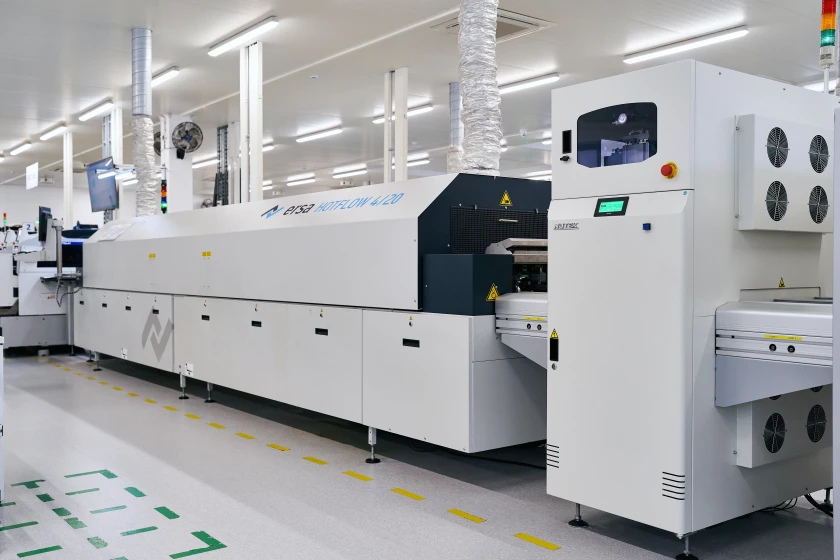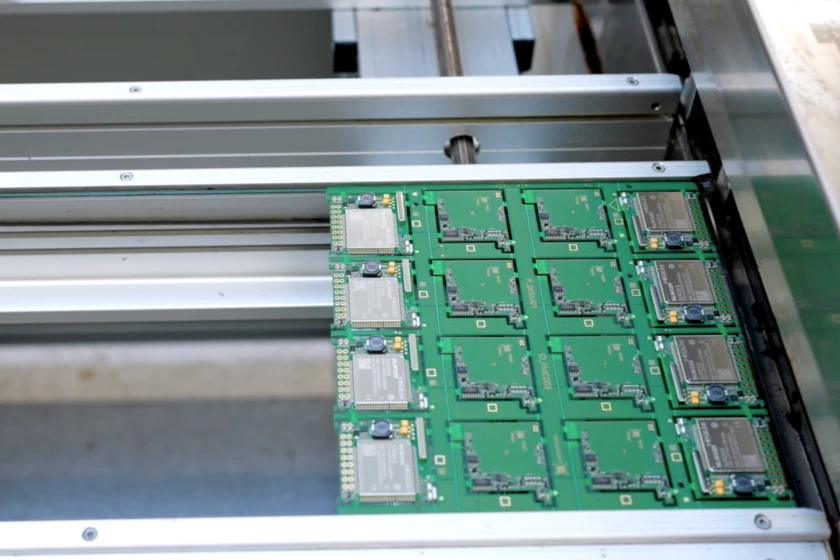Reflow soldering
Following the component placement, the assembled PCB board goes through the soldering oven, where the high temperature gradually melts the paste and attaches the electronic components to the board. These are long convection ovens with a process length of more than 6 meters, separated into 10 heating zones and cooling zones. Preheat, thermal soak, reflow, and cooling are the four stages into which the zones are split.
Solder profiles can be optimized for each particular assembly job based on the component size and layout, layer counts on the PCB, and copper distribution on the board. The oven's heating zones are each set at a controlled temperature that corresponds to the solder profiles needed for assembly.
After heating the component and its attachment to the board, follow the cooling process. The solder paste will harden as soon as the temperature decreases significantly, and the components are then attached to the circuit board. In the final areas of the reflow oven, where the processed board is cooling, the solder alloy solidifies and forms the solder joints.
After reflow soldering, the PCB board goes to the loader, which performs two functions. It can act as a buffer for the boards that are waiting for checking, or it can be used to cool down the board after reflow soldering.



